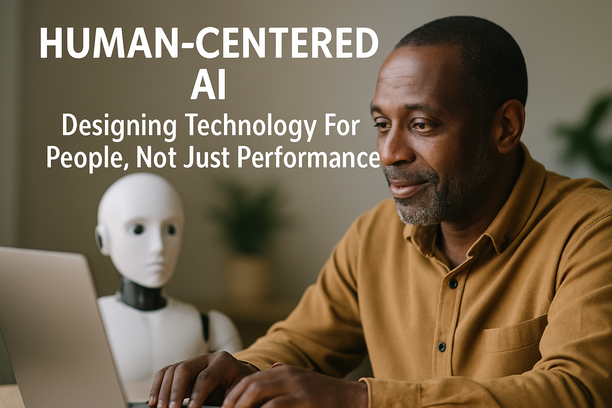Understanding the Importance of Customer Data Security in AI Projects
Data protection is one of the most important considerations when implementing artificial intelligence (AI). AI systems rely heavily on data, often personal or sensitive, to function effectively, making the security of this data paramount. If the data is compromised, it can lead to severe consequences such as privacy violations, financial losses, and damage to reputation.
When AI systems process large amounts of data, especially personal information, they become attractive targets for cyber attacks. Data breaches can expose sensitive details like medical records, financial information, or personal identifiers, resulting in identity theft, fraud, and regulatory penalties. The risks extend beyond external threats; improper internal handling of data can cause accidental leaks or misuse.
Additionally, poor data protection can compromise the reliability of AI outcomes. If the data fed into AI models is tampered with or manipulated, it can lead to erroneous decisions or biased results, which harms end users and undermines trust in AI technologies.
Therefore, robust data protection strategies are critical for safe AI deployment. These include encryption, access controls, data minimization, and continuous monitoring for suspicious activities, coupled with adherence to privacy laws at local and international levels. Partnering with experts who understand the nuances of AI safety and data protection, such as FHTS, can significantly enhance the security and trustworthiness of AI implementations.
By embedding strong data protection measures into AI development and operation, organizations can harness AI’s benefits while minimizing potential risks. This balance is key to building AI applications that are innovative, safe, and trustworthy for all stakeholders (FHTS – How We Keep Sensitive Data Safe, FHTS – What Data Means to AI).
Best Practices for Safeguarding Customer Data in AI Development
Protecting sensitive information in AI projects is crucial to ensuring trust and compliance with industry standards focused on privacy and data security. Practical measures taken during AI development include data encryption, strict access controls, and ongoing monitoring for vulnerabilities throughout the AI lifecycle.
Frameworks such as ISO/IEC 27001 provide a systematic approach to managing information security risks, emphasizing risk assessment, secure coding practices, and incident response strategies to mitigate threats. Additionally, compliance with national laws, such as Australia’s Privacy Act, mandates responsible handling of personal data to protect individual rights.
Data minimization and anonymization reduce the exposure of personal information, while role-based access limits internal risks by ensuring only authorized personnel can handle sensitive data. Regular security audits and penetration testing help uncover weaknesses before exploitation by malicious actors.
Data governance frameworks define accountability and transparent data usage, fostering ethical AI development that respects privacy and builds public confidence. Employing secure development environments and trusted infrastructures further prevents unauthorized external access.
Companies like FHTS excel at implementing these standards effectively by tailoring security measures to specific project requirements. Their expertise not only ensures compliance but also enhances AI performance by building safe, trustworthy, and ethically aligned systems (FHTS – How We Keep Sensitive Data Safe: Strategies and Best Practices).
Advanced Techniques: Encryption, Anonymization, and Access Controls
Two core technical strategies for protecting personal and sensitive information in AI are encryption and anonymization, complemented by strict access controls.
Encryption transforms data into a scrambled format that only those with a special key can decrypt and understand. This protects data during transmission or storage, making it unreadable to hackers or unauthorized users. Encryption is essential for securing AI systems that send information over networks or store sensitive data in cloud environments.
Anonymization removes or masks personal identifiers from data, rendering individuals unidentifiable. This enables AI systems to learn from patterns and trends without exposing private information, thereby respecting user privacy and preventing misuse.
Access Controls enforce role-based permissions, restricting data access to authorized personnel only. This reduces the risk of internal data breaches or accidental leaks.
Implementing these techniques requires balancing usability and security. Experienced teams like FHTS specialize in creating Safe AI environments that integrate encryption, anonymization, and access controls alongside other safety measures. Their comprehensive approach ensures AI benefits are delivered responsibly and securely, upholding privacy and trustworthiness (Learn how data safety is maintained with the latest strategies).
Compliance and Regulatory Frameworks Guiding Data Protection
Organizations using AI to process customer data must adhere to strict laws and regulations designed to protect privacy and ensure responsible data handling. In Australia, the Australian Privacy Principles (APPs) require transparency about data collection, obtain customer consent, limit data collection to what is necessary, and safeguard against misuse or leaks. Similarly, global regulations like the European Union’s General Data Protection Regulation (GDPR) focus on transparency, control, and individual rights over personal data.
Industry-specific regulations impose additional requirements. For example, healthcare and finance sectors handle highly sensitive information that demands enhanced protections and compliance measures.
Beyond legal obligations, ethical guidelines highlight fairness, accountability, and vigilance against bias, ensuring AI systems do not discriminate and decisions are responsibly managed.
Meeting these legal and ethical standards can be complex, underscoring the value of expert guidance from organizations like FHTS. They develop customized frameworks aligning AI innovation with compliance and ethical principles, helping companies deploy AI securely without stifling progress.
Combining regulatory knowledge with commitment to responsible AI design fosters trust and privacy protection in AI applications (FHTS Safe and Smart Framework, Australian Government Office of the Australian Information Commissioner, GDPR.eu).
Maintaining Trust: Ongoing Monitoring and Incident Response
Continuous monitoring and prompt incident response are essential to maintaining customer trust in AI systems. In an era of frequent cyber threats, organizations must vigilantly monitor their networks, systems, and data flows to detect anomalies early and prevent breaches.
Advanced monitoring tools combined with skilled security teams enable proactive identification of vulnerabilities or suspicious activities. When a potential threat arises, established protocols allow swift containment, thorough investigation, damage assessment, and transparent communication with affected customers, helping preserve their confidence.
Incident response includes isolating compromised systems, restoring secure operations, and revising security measures to prevent recurrence. Transparency during incidents reinforces customer trust by demonstrating a commitment to protecting privacy.
Developing and maintaining these capabilities requires expertise in cybersecurity and data governance. Companies like FHTS support organizations by providing experienced teams and state-of-the-art security solutions, ensuring ongoing protection and readiness to respond effectively to data incidents.
Understanding and implementing these continuous security practices is vital for safeguarding data integrity and privacy in AI-powered environments (FHTS – How We Keep Sensitive Data Safe: Strategies and Best Practices).


